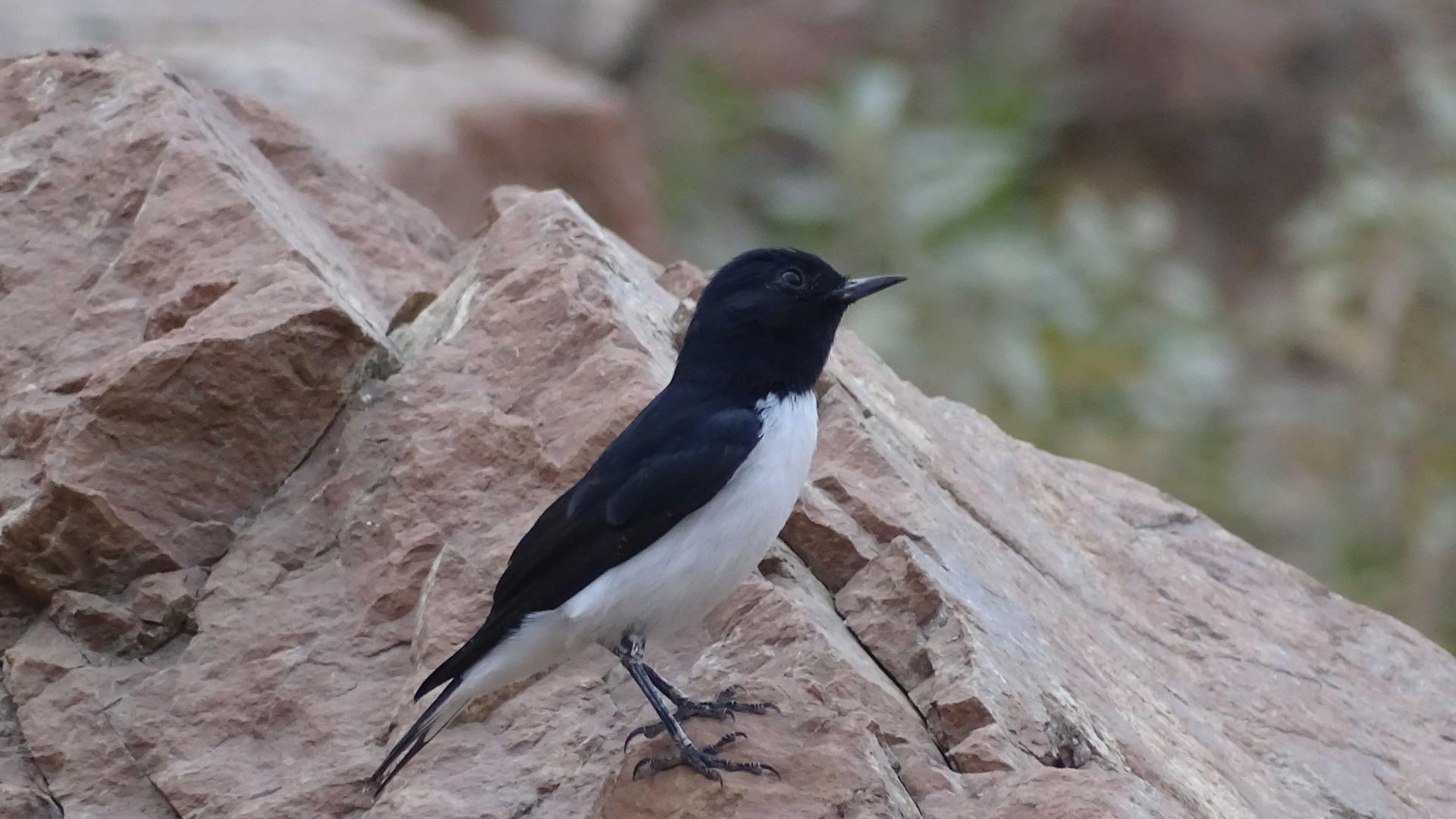Biodiversity
Overview
The birds encountered in the village of Shis are well representative of the Hajar Mountains avifauna. The Hume’ s wheatear (Oenanthe albonigra), easily recognizable from his black and white plumage, has a distribution range restricted to Iran, UAE and Oman, and like to come to feed in the farms and around the falaj.
- The Desert Lark (Ammomanes deserti), a seed-eater, is well adapted to its desert environment, but still needs regular access to water.
- The White-spectacles Bulbul (Pycnonotus xanthopygos), identified by his black head, white circle around the eyes, and yellow rump, is the native species of Arabia, contrarily to the now more widespread White-eared bulbul (Pycnonotus leucotis).
- The Purple sunbird (Cinnyris asiaticus), a tiny bird, that looks like a hummingbird, is very abundant in the palm trees plantations where he feeds on small insects and nectar.
Some other species coming from Central Asia choose wadi Shees as their wintering ground:
- The blue-rock Thrush (Monticola solitarius) can often be seen from September to March in the vicinity of the stairs leading to the trail.
- The Black redstart (Phoenicurus ochruros) is also a regular wintering species. The male display a red tail and an orange vent that contrast with its dark head and back.
- Small warblers, like the Lesser Whitethroat (Sylvia curruca), often forage in the deep of the Acacias or other hardwoods in search of small insects
Dragonflies and damselflies (Odonates) are an important component of the freshwater ecosystem. The totality of their life cycle depends on the presence of water. In their early stage, they spend several weeks or months as larva in the water, where they predate on smaller organisms. After they become an adult, they fly across water to mate and lay eggs. In Wadi Shees, live several endemic species (only found in UAE and Oman), like the endangered Arabicneura khalidi, Arabicnemis caerulea, another damselfly or the near-threatened Paragomphus sinaiticus Two endemic vertebrates are also living in the falaj of Shees: the Arabian toad (Sclerophrys arabica) and the Garra fish (Garra barreimiae)

